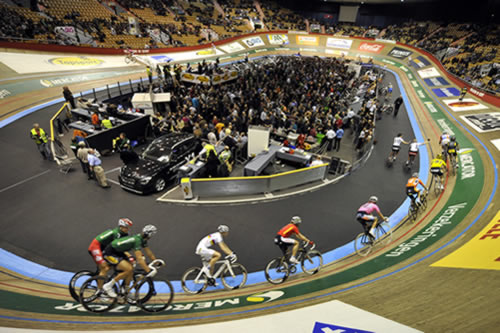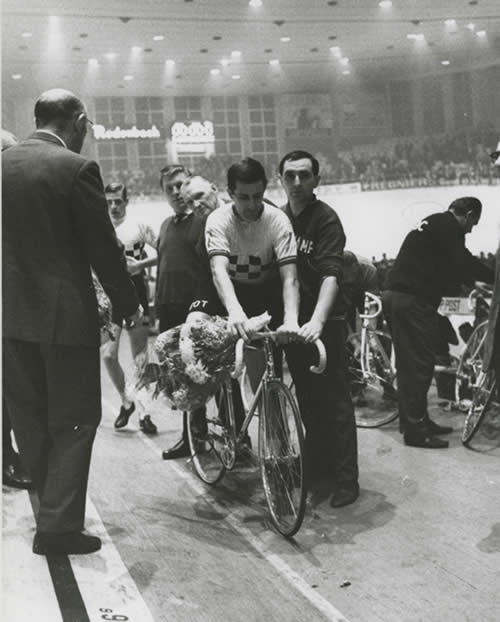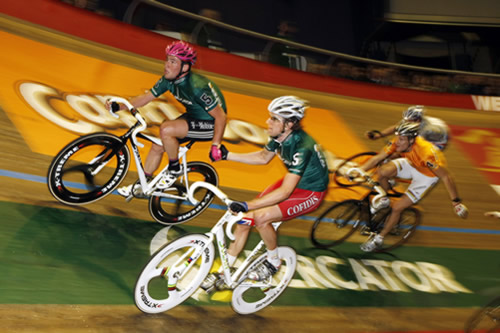‘T Kuipke
Cycling Legends is the name of the independent publishing brand I’m launching in 2018. It has a website base, www.cyclinglegends.co.uk and will publish high quality bookazines, books and sell exclusive products.
The website will be full of features about cycling’s past and present, places and people, but until it goes live in January 2018 here’s a short piece on one of those places, the tiny track the Ghent Six-Day race is held on. It’s called ‘t Kuipke.
It was the Sportspaleis, now it’s the Citadelpark Velodrome, but everybody knows it by the name Ghent people (Gentenaars) gave the ageing wooden track inside. ‘T Kuipke is Flemish, Ghent was the capital of the old County of Flanders, a once independent state; ‘t is short for het, which means ‘the’, while Kuip means bowl, so Kuipke is a tiny bowl. A perfect description for the crazy-steep 167-metre track inside the Citadelpark Velodrome.
There’s been an indoor track in the Citadelpark since 1922. The first was erected and dismantled each year for the six-day in an exhibition space called the Floraliapaleis. Then in 1927 it found a permanent home in a new custom-built stadium called the Sportspaleis. Only two six-days were held there during the 1930s, but after the Second World War it became the hub of winter cycling in Ghent.
Training races for amateurs were held every Wednesday, when riders raced for places in the big meetings at the weekend. There was plenty of racing for professionals too, including an Armistice Day meeting and one held on Christmas Day called the Night of the Stars. The best riders were contracted, and the Night of the Stars was so popular the doors had to be shut two hours before the meeting, because so many people wanted to get in.
Flanders finish
In one of those ‘you wouldn’t believe it but it’s true’ stories that litter cycling, ‘t Kuipke hosted the finish of Tour of Flanders between 1942 and 1944. Shortly before he died in 2004 the 1942 winner Briek Schotte, the revered ‘Iron Briek’ described the finish to me; “Part of the banking near the big doors to the track was removed. We rode in then up onto the track on some loose planks. It was really tricky because as well as the planks you had to turn sharp right to get into the track. That meant there was never a sprint inside, the first man through those doors always won.The original Sportspaleis burned down on November 12th 1962, just before the start of that year’s six-day. It took track director Oscar Daemers three years to build a new one, and when it opened in 1965 Eddy Merckx and Patrick Sercu won the first six-day held on it, beating Tom Simpson and Peter Post in a thrilling Madison finale.
The Kuipke has a special place in the hearts of British bike fans, and thousands make the annual beery pilgrimage to watch the Ghent Six-Day or Zesdaagse Vlaandren-Gent to give it its proper name. Another British rider, Tony Doyle won the race in 1986 and 1991. Then in 2003 there wasn’t a dry eye in the place when Matthew Gilmore and Bradley Wiggins won.
Both riders were born in Ghent, and both were the sons of Australian six-day racers. Matthew’s father Graeme won 12 six days including two in Ghent, while Gary Wiggins won one. It was fitting that the by then Sir Bradley Wiggins ended his glorious career on ‘t Kuipke by winning the 2016 Ghent Six-Day paired with his brother-in-arms, Mark Cavendish.



